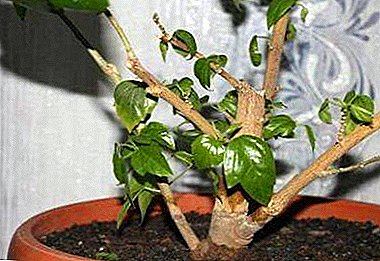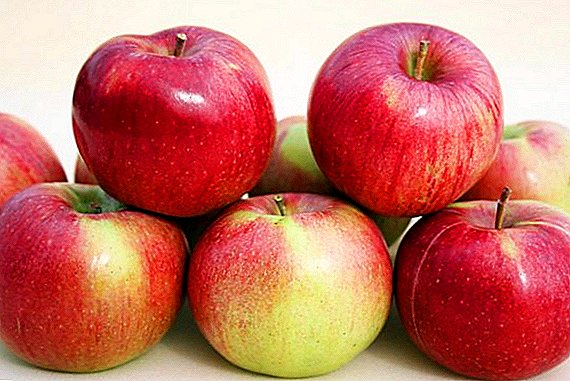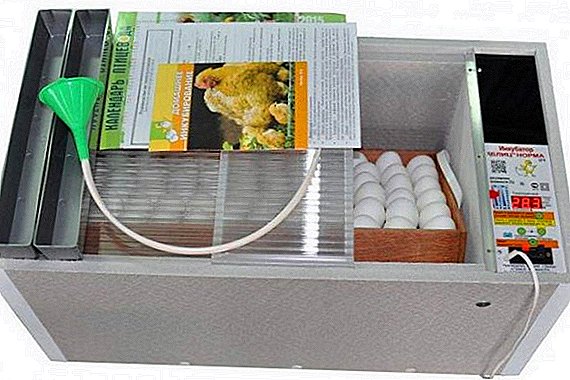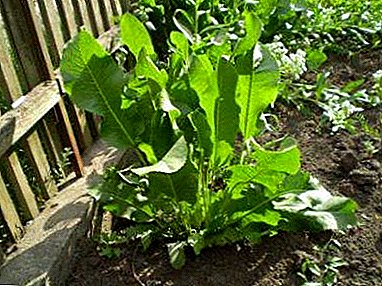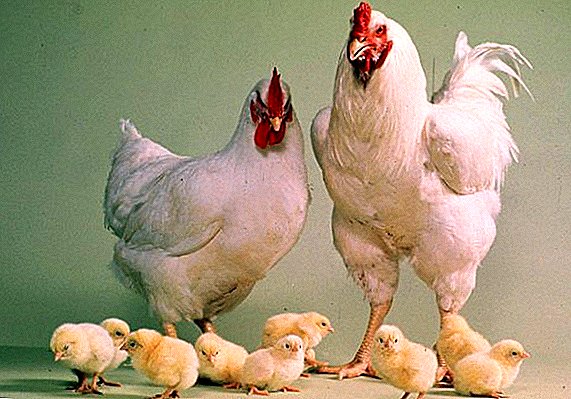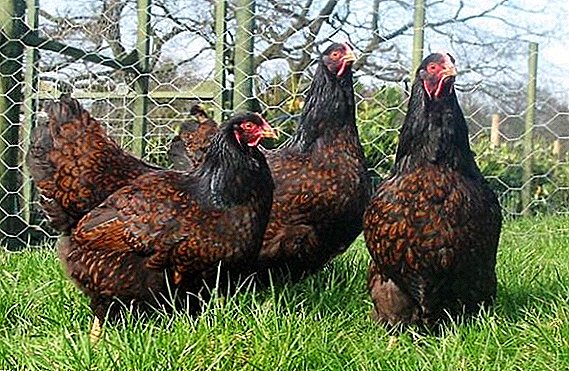 Epimedium or Goryanka - perennial herbs of the barberry family. They are found in many countries of Western Europe and Asia. The Germans and the Dutch call this plant "flower of the elves." In our country, the plant is not very popular among gardeners. You can see it very rarely as a decorative ornament of flower beds or terraces.
Epimedium or Goryanka - perennial herbs of the barberry family. They are found in many countries of Western Europe and Asia. The Germans and the Dutch call this plant "flower of the elves." In our country, the plant is not very popular among gardeners. You can see it very rarely as a decorative ornament of flower beds or terraces.
Common types of mountain woman
"Elven flower" is found in the mountainous regions of Europe and Asia, as well as in the moist forests of North Africa. There are more than 50 plants of this species. The root of epimedium is strongly branched. "Elven flower" forms bushes with small leaves in the shape of a heart or an arrowhead.
Did you know? Epimedium is also called the "grass of the lustful goat". This expression appeared after people saw an unusual reaction of mountain goats after eating epimedium. Goats were becoming more playful towards their sexual partner.
Epimetium is both evergreen and replaces leaves every year. Breeders from China have brought a new type of Goryanka - semi-green. Minute leaves dense, slightly fleecy, with a bright purple color at the edges. The flowers of epimedium are rather small, but very beautiful. The colors are different: red, yellow, white, purple or a combination of all together.  The fruit is dry, rich in nutrients. Therefore, these fruits are very fond of ants, which spread the seeds of the mountain woman. Separated by ants, they begin to germinate, so these flowers multiply.
The fruit is dry, rich in nutrients. Therefore, these fruits are very fond of ants, which spread the seeds of the mountain woman. Separated by ants, they begin to germinate, so these flowers multiply.
Today, our gardeners grow about 10 species of Goryanka in their own areas, and although this plant is extremely rare, in the future there is the option of mass flower propagation throughout the country. Here are some types of this plant:
- Goryanka alpine - found in the mountainous regions of Italy, France, Austria, Germany and Switzerland. A perennial plant with a yellowish flower color, about 20 cm high.
- Goryanka colchic evergreen - found in the mountainous regions of Turkey and the Caucasus. The plant forms a dense cover. A thick layer of leaves changes every 14-16 months. It blooms in early and mid-May for 10-15 days. The flowers are sunny yellow, small, about 1.5-2 cm.
- Goryanka multicolored - It is a hybrid of large-flowered and Colchian epimedium. This type of plant tolerates snowy winters, so you can meet it in our country. The leaves are large - 35-40 cm, with a purple color. Blossoms in lemon-yellow color in May for three weeks.
- Korean Goryanka - often found in shady forests of South Korea, Mongolia, China, Cambodia, etc. Forms dense turf with multiple foliage. It blooms in May for 15-20 days. The flowers are very beautiful, light purple. The plant is frost-resistant, so the climate of the mountainous regions of Mongolia tolerates without much difficulty. This epimedium is genetically protected from various diseases. It grows slowly, no more than 2 cm each year.
- Goryanka grandiflora - found in Japan and eastern Russia. Probably the most common type of plant. It tolerates a cold climate, but in the snowless winters it needs additional warmth. It has large leaves with a characteristic bronze color. Blooms in purple or white.
- Goryanka red - forms a dense bush above the ground. It blooms with bright red flowers. The most common of all types of epimedium is found in our area.
- Goryanka cirrus - grows in mountainous areas of Iraq, Iran and the Caucasus. It has a large cylindrical root. Blossoms in March. It grows to a height of 50 cm. With dense leaves about 40 cm long. On the leaves form a coat of reddish color.
- Goryanka Perralderi- found in the mountainous regions of Algeria. Strongly turfy plant with light yellow flowers. It tolerates moderate frosts. It has shiny leaves. Not afraid of pests and grows very much over the year.








Important! The life span of epimedium is 10-12 years. With proper care, this period can be increased.
These are just some types of epimedium, the most popular in the form of ornamental plants in our climatic zone.
Place for the mountain woman in the garden: lighting and soil
Virtually all types of epimedium work well with any pests. The plant is unpretentious to sunlight, but the best place to plant will be partial shade. The soil must be selected with neutral moisture and acidity. Chernozem this type of plant tolerates poorly. Best of all, the soil was clay-dung or sand-dung.
In addition to the Goryanka, perennials can be grown on shaded garden and summer cottages: astilba, aconite, brunner, dicenter, Volzhanka, saxifrage, bathing vessel, lupine, and host.
The root system of epimedium is capable of actively absorbing water from the soil, so the strong moisture of the soil can adversely affect the favorable growth of the "elf flower". In winter, epimedium is better to mulch and cover with foil.
Planting mountain saplings
The landing of the mountains is best done in mid-late April. But if they are planted in the summer or autumn, then there should be no problems with growth. The plant takes root with ease throughout the growing season.  If epimedium seedlings are purchased in a container, they can be planted in open soil at any time except for winter. Before you start, you need to stimulate the plant with a solution of root, heteroauxin or epin. It is done this way: the plant is lowered into the solution for 25-30 minutes; after the bubbles stop popping up, seedlings can be planted in open ground. Dig up the soil and cover with a thin layer of humus.
If epimedium seedlings are purchased in a container, they can be planted in open soil at any time except for winter. Before you start, you need to stimulate the plant with a solution of root, heteroauxin or epin. It is done this way: the plant is lowered into the solution for 25-30 minutes; after the bubbles stop popping up, seedlings can be planted in open ground. Dig up the soil and cover with a thin layer of humus.
Did you know? Alpine epimedium is mentioned in literature since 1561.
If epimedium seedlings were purchased with an open root system, it is best to plant in spring. But before starting the stimulation with the solutions described for the seedlings in the container, only the procedure time should be increased to 4-5 hours.
After that, all harmful microorganisms that were present at the root, will die, and the plant can be planted in open soil. After the landing, the mountain woman requires special care. To begin with, fertilize the earth with mulch. Then seedlings need to be watered daily for two weeks, until they fully take root. 
Peculiarities of care for Goryanka
Epimedium is a mountain plant, it does not tolerate strong moisture and winters without snow, so special care is needed. However, the "flower of the elves" has a huge plus when growing and caring in our area: the plant independently fights with virtually all harmful microorganisms. Therefore, no special protection measures are required.
Watering
This type of plant loves moderately wet soil. Many species of epimedium are dry-resistant and do not need watering. Watering should be carried out in the first two weeks after planting, and then once every 3-4 weeks. In particularly dry periods, water once every 1.5-2 weeks. This is done for better flowering of epimedium for decorative purposes. However, the plant will not die even if it is not watered at all. 
Important! Goryanki of Japanese, Chinese and Algerian origin for the winter to cover the protective film.
Top dressing
Goryanka after planting and watering in the first two weeks requires special care in terms of fertilizers. This is done in order to give the plant a beautiful decorative shape. However, it is not necessary to do this with particular intensity.
It is enough to cover the soil around the plant with mulch every spring. Epimedium itself is a source of organic fertilizers in the form of foliage. The flower of the elves drops some leaves before winter, and the next year they also become mulch for the plant.
To make the flower decorative, you can cut off the old leaves, but do it carefully, without touching the shoots and flower growths. Since the epimedium is a mountain plant, it is at the genetic level in the process of evolution has taken care of itself.
Wintering
Some types of epimedium need warming of roots for the winter period, especially when winter is snowless and with severe frosts. In order not to let the "elf flower" die, the soil around the roots should be covered with a thick layer of leaves. It is necessary to clean the leaves in the spring, when the frost at night is over. 
Did you know? In England, epimedium is called the “archbishop's hat” because of the presence of a spur on the corolla.
Evergreen species of epimedium for the winter remain covered with foliage, and begin to dump it only in early May. This process is very slow and prevents new leaves from sprouting. Therefore, in early April, you need to independently trim about 40-50% of the leaves.
Application in landscape design and partners Miner
"Elven flower" grows wide and beautiful dark green layer. Leaflets can acquire shades of purple and bronze colors and serve as ornaments in rockeries, rock gardens and mixborders. Epimetium can be landscaped with a garden or terrace of your site.  In spring, when there are not so many green plants, the Goryanka is particularly pleased with its flowering. A company of epimedium can be made up of ferns, freezers, tiaks, mellunits. Bushes of 7-9 pieces, planted under the trees, will be both an ornament and a living fertilizer for older comrades.
In spring, when there are not so many green plants, the Goryanka is particularly pleased with its flowering. A company of epimedium can be made up of ferns, freezers, tiaks, mellunits. Bushes of 7-9 pieces, planted under the trees, will be both an ornament and a living fertilizer for older comrades.
To please the gardener's eye with bright colors in the spring will be: tulips, crocuses, hazel grouses, snowdrops, hyacinths, primroses. These flowers have an excellent aesthetic appearance and do not require much effort when grown.
The healing properties of Goryanka
Goryanka has many healing properties. The roots and leaves of epimedium contain steroids, alkaloids, flavonoids, saponins and glycosides. On the healing properties of plants for a long time legends in eastern Asia. "Elven flower" is a strong choleretic and diuretic. It is also useful for strengthening the body's immune system.
Important! Goryanka tincture can not be taken during pregnancy and lactation.
A systematic intake of the Goryanka improves potency in men. When taking tincture of epimedium in men, the rate of spermatogenesis increases. Also increases the activity of sperm, which has a positive effect on future fertilization of the egg. "Elven flower" stimulates accelerated blood circulation, which has a positive effect on male erection.
Goryanka in the form of tincture is used during menopause in women. It helps normalize blood pressure and elevate mood as a release of endorphins. If you drink tea from epimedium, the rate of neuron reaction in the brain increases. This has a positive effect on the speed of thinking and concentration. Also, when you receive such tea, the process of removing toxic substances from the body is accelerated.
Korean goryanka tincture is sold in pharmacies. The drug is specifically designed to enhance potency in men.



